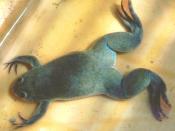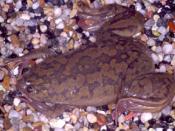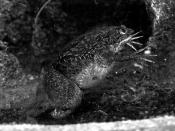Laboratory 2: Understanding fertilization and early development in the South African clawed frog (Xenopus laevis)
Introduction
Similar to sea urchins, amphibian early development has been studied to a great extent. Amphibians, especially the frog Xenopus, were the first vertebrates to serve as models of development because these organisms use the same processes and genes used by other vertebrates, humans included, to generate body axes and organs. Thus, studies of amphibian growth and development provided the foundation for questions and conclusions that led to the expansion of vertebrate developmental biology. Amphibians are anamniotic vertebrates, meaning they do not form the amnion that permits embryonic development to take place in a dry environment. Therefore, it is thought that, because development occurs in an aqueous environment with only semipermeable membranes separating the embryo from its external surroundings, these embryos are particularly susceptible to potentially negative side effects resulting from pollution or drought.
However, even when grown in experimentally manipulated environments, many processes are still able to proceed normally. Still, some manipulations affect processes that are fundamental to normal embryo growth, resulting in adverse effects from short exposures.
In this laboratory, we explored two of these conditions: ultraviolet light and lithium chloride exposure. We hypothesize that if embryos are not grown in virtually normal conditions in the lab, then the processes involved in normal embryonic development will be disrupted and result in an abnormal embryo growth. In a developing Xenopus embryo, cytoplasmic rearrangements are crucial to normal axis formation. An interruption of these rearrangements results in ventralization of the embryo, meaning it lacks an obvious dorsal side (Blaustein et. al., 1998). Because previous experiments have shown that exposure to UV-C light can disrupt these movements, we predict that this ventralization will result in embryos treated with UV-C light. Furthermore, we predict...


